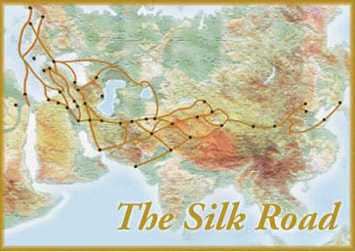Cosmopolitan Chang’an
Hansen, Valerie. Daily Life in the Capital & Schafer, Edward H. In Golden Peaches of Samarkand
The city of Chang’an was located at the end of the Silk Road. What is known of Chang’an’s history is the birth of the city during the Tang Dynasty. Following the reading of Daily Life in the Capital, I am confident enough to state that life in Chang’an was extremely unconventional and would be unfamiliar to the modern person. The city of Chang’an was divided into many different sectors and areas, which is quite relatable, however the unconventional characteristics arise when it is learnt that those communities were divided by barbed wires and fences. For security reasons, the city was divided and protected with gates that opened and closed at certain times throughout the day. In the evening, the gates remained locked and were guarded by soldiers on horseback. The streets were free from people roaming around because no one was permitted to walk after dark. To the modern person, this idea of what a city is and is made up of does not register as the norm. The modern person cannot relate to the daily life of a Chang’an person. This contrast between the Chang’an way of life and the modern way of life leads me to conclude how drastic society has developed. The Chang’an people were so well protected where as the modern society does not have curfews or gated communities with soldiers patrolling the parameters. Reading further on the city of Chang’an I was very surprised to know that there was a great deal of poetry surfacing during that era. Poetry was highly important in the education curriculum of the Chang’an system. Educated gentlemen took interest in writing and poetry which urged the outbreak of poetry writing. In Schafer’s, In Golden Peaches of Samarkand, it is noted that city of Chang’an was recognized as the new literary class for its achievements in the field of writing. All the successes of Chang’an pressed foreigners to inhabit its lands. The city of Chang’an was known as the “godly metropolis” for its commercial and educational triumphs and its beautiful landscapes.
I find it very intriguing that even though the tactics of Chang’an were very unconventional, the city still found a way to develop and excel commercially and educationally. Chang’an was popular enough to lure foreigners to inhabit land masses and start a new life. I originally had a preconceived notion that because the methods of Chang’an proved to be unconventional, the city did not operate functionally. However, following the readings of the scholars who state that Chang’an was a functioning city, I was wrong in my position.

No comments:
Post a Comment